15 Ng. 100 Đ. Nguyễn Xiển, Thanh Xuân Nam, Thanh Xuân, Hà Nội 100000
Vientiane. The name itself whispers tales of ancient temples, tranquil Mekong sunsets, and a laid-back charm that distinguishes it from the bustling metropolises of Southeast Asia. Often overlooked in favor of its more vibrant neighbors, Laos' capital city offers a unique blend of French colonial elegance, Buddhist spirituality, and a surprisingly contemporary edge. This comprehensive guide invites you to delve deep into the heart of Vientiane, exploring its rich history, vibrant culture, delectable cuisine, and the myriad experiences that await the discerning traveler. And for an effortless journey, remember to explore the curated tours offered by Golden Trail Travel at https://goldentrailtravel.com/.
Vientiane’s story is etched in its very fabric. From its humble beginnings as a small settlement on the banks of the Mekong to its rise as the capital of the Lan Xang kingdom and later a French colonial administrative center, the city has witnessed centuries of change, conflict, and resilience.
The Echoes of Ancient Kingdoms: Legend has it that Vientiane was founded by Prince Thattaradtha, who left the Lao kingdom of Muang Phanom to establish a new city. While the exact origins are debated, archaeological evidence suggests human settlements in the area dating back to prehistoric times. The city truly came into prominence during the Lan Xang Kingdom (Kingdom of a Million Elephants), particularly under King Setthathirath in the mid-16th century, who moved the capital from Luang Prabang to Vientiane, bringing with it the sacred Phra Keo (Emerald Buddha) and strengthening the city's spiritual significance.
Colonial Legacy and Post-Independence Resilience: The 19th century saw Vientiane, like much of Southeast Asia, fall under colonial rule. The French transformed the city, leaving behind a legacy of graceful boulevards, charming shophouses, and a distinct culinary influence that persists to this day. After gaining independence in 1953, Vientiane navigated the complexities of the Cold War and the Vietnam War, eventually emerging as the capital of the Lao People's Democratic Republic. This period of rapid change has shaped the modern Vientiane, a city that gracefully balances its ancient heritage with a forward-looking perspective.
A Tapestry of Beliefs: Buddhism is deeply woven into the fabric of Vientiane life. Ornate temples (wats) dot the cityscape, their golden spires gleaming under the tropical sun. Monks in saffron robes are a common sight, their serene presence a reminder of the spiritual heart of the city. Beyond Buddhism, animistic beliefs and a respectful blend of diverse cultures contribute to Vientiane’s unique identity. This spiritual foundation contributes significantly to the city's peaceful and unhurried atmosphere.
The Lao Language and Hospitality: Lao, a tonal language with a graceful script, is the official language. While French and increasingly English are spoken in tourist areas, a few basic Lao phrases will always be met with warm smiles and appreciation. The Lao people are renowned for their gentle nature and genuine hospitality. Visitors often remark on the relaxed pace of life and the welcoming demeanor of the locals, making Vientiane an incredibly pleasant place to explore.
Vientiane, despite its relaxed vibe, is brimming with historical and cultural treasures waiting to be discovered. Each landmark tells a part of the city's story, offering insights into its spiritual, political, and architectural heritage.
Pha That Luang: The Golden Stupa of Laos: Undoubtedly the most significant national monument in Laos, Pha That Luang is a magnificent golden stupa that gleams majestically, especially at sunset. Believed to enshrine a relic of the Buddha, this grand structure is not only a symbol of Buddhist faith but also of Lao sovereignty. Its current structure dates back to the 16th century, though it has undergone several reconstructions after various invasions. The intricate details, the surrounding temples, and the sheer scale of Pha That Luang are awe-inspiring. It's an essential stop for anyone visiting Vientiane, offering both spiritual reflection and architectural grandeur.
Patuxai: The Arc de Triomphe of Vientiane: Standing proudly at the end of a grand avenue, Patuxai (meaning "Victory Gate") is often dubbed the "Arc de Triomphe of Vientiane." Built in the 1960s as a war memorial, its design incorporates traditional Lao motifs alongside a French-inspired structure. Climbing to the top offers panoramic views of the city, providing a different perspective on Vientiane’s layout and its blend of historical influences. The surrounding park with its musical fountains adds to the appeal, making it a popular spot for both locals and tourists to relax.
Wat Si Saket: The Oldest Surviving Temple: Dating back to 1818, Wat Si Saket holds the distinction of being Vientiane's oldest surviving temple. Its cloister walls house thousands of miniature Buddha statues, each one unique, ranging in size and material. The temple's architecture is exquisite, with a beautiful five-tiered roof and a tranquil courtyard. Miraculously spared from the Siamese invasion that destroyed much of Vientiane in 1828, Wat Si Saket offers a rare glimpse into the city's pre-colonial religious architecture. The serene atmosphere invites contemplation and appreciation for its historical significance.
Haw Phra Kaew: The Former Home of the Emerald Buddha: Once the royal temple and home to the sacred Emerald Buddha (now housed in Bangkok), Haw Phra Kaew is now a museum of religious art. While the original Emerald Buddha is no longer here, the temple’s impressive architecture, intricate carvings, and collection of Lao and Khmer Buddhist artifacts are captivating. The tranquil gardens surrounding the temple provide a peaceful respite from the city's gentle bustle. It's a place where history and art intertwine, offering a deeper understanding of Laos' spiritual heritage.
COPE Visitor Centre: A Profound and Moving Experience: For a truly impactful and educational experience, the COPE Visitor Centre is a must-visit. COPE (Cooperative Orthotic and Prosthetic Enterprise) is a local non-profit organization that provides prosthetic limbs and rehabilitation services to victims of unexploded ordnance (UXO) left over from the Indochina Wars. The center features powerful exhibitions, personal stories, and educational materials that shed light on the devastating legacy of UXO in Laos. It's a sobering but incredibly important stop that highlights the resilience of the Lao people and the ongoing efforts to overcome this tragic past.
Mekong Riverside Park: Vientiane's Sunset Spectacle: As the day draws to a close, the Mekong Riverside Park comes alive. Locals gather for exercise, street food vendors set up their stalls, and visitors flock to witness the spectacular sunset over the Mekong River. The riverside promenade offers a perfect vantage point to watch the sky ablaze with vibrant colors, reflecting on the tranquil waters. It's an ideal spot for an evening stroll, to sample local delicacies, or simply to soak in the laid-back atmosphere of Vientiane at dusk.
Vientiane's allure extends far beyond its famous monuments. To truly experience the city, one must delve into its vibrant markets, savor its distinctive cuisine, and embrace its unhurried pace.
Exploring the Markets: A Feast for the Senses:
A Culinary Journey: Savoring Lao Flavors: Lao cuisine, while sharing some similarities with its Thai and Vietnamese neighbors, possesses its own distinct character, emphasizing fresh herbs, sticky rice, and a balance of sour, spicy, salty, and sweet flavors.
Wellness and Relaxation: Indulge and Rejuvenate: After a day of exploring, Vientiane offers ample opportunities for relaxation and rejuvenation.
While Vientiane itself offers plenty to see and do, a few rewarding day trips can enrich your Lao adventure.
Buddha Park (Xieng Khuan): A Surreal Sculpture Garden: Just 25 kilometers southeast of Vientiane, Buddha Park is a fascinating and somewhat eccentric sculpture park featuring hundreds of Buddhist and Hindu statues. Created by a monk named Luang Pu Bunleua Sulilat, the park is a unique blend of religious symbolism and artistic expression. Highlights include a massive reclining Buddha, a towering 3-story concrete structure resembling a pumpkin that you can climb inside, and various mythical creatures. It's a whimsical and thought-provoking destination, easily accessible by tuk-tuk or shared taxi.
Nam Ngum Lake: Laos' Inland Sea: Approximately 90 kilometers north of Vientiane, Nam Ngum Lake is the largest lake in Laos, formed by a hydroelectric dam. This vast expanse of water, dotted with islands and surrounded by lush hills, offers a tranquil escape from the city. You can enjoy boat trips, visit local fishing villages, or simply relax by the water's edge. It's a popular spot for picnics and enjoying the natural beauty of the Lao countryside.
Ban Keun Zoo & Resort (Vang Sang): An Animal Encounter: For families or those interested in wildlife, Ban Keun Zoo and Resort, located near Nam Ngum Lake, offers an opportunity to see a variety of animals. While perhaps not as extensive as larger international zoos, it provides a chance to observe local wildlife and enjoy the surrounding natural environment.
To ensure a seamless and unforgettable journey through Vientiane and beyond, consider partnering with Golden Trail Travel. Their expertise in crafting unique and personalized itineraries will allow you to discover the best of Laos without the hassle of planning.
Why Choose Golden Trail Travel?
Golden Trail Travel offers a range of tours that can be tailored to include Vientiane as a starting point or a key destination. Imagine a journey that takes you from the serene temples of Vientiane to the majestic waterfalls of Luang Prabang, or an adventurous trek through the lush landscapes of Northern Laos. Their experienced team can help you design the perfect itinerary, ensuring every moment of your trip is filled with wonder and discovery.
Getting There:
Getting Around Vientiane:
Best Time to Visit: The cool and dry season, from October to February, is generally considered the best time to visit Vientiane. Temperatures are pleasant, and humidity is lower. The hot season (March to May) can be quite warm, while the rainy season (June to September) brings lush green landscapes but also occasional heavy downpours.
Visa Requirements: Most nationalities require a visa to enter Laos. Visas can be obtained upon arrival at Wattay International Airport or in advance from a Lao embassy or consulate. Check the latest requirements for your nationality before traveling.
Currency: The official currency is the Lao Kip (LAK). While Thai Baht and US Dollars are often accepted in tourist areas, it's best to use Kip for everyday transactions. ATMs are widely available.
Safety: Vientiane is generally a safe city. However, exercise common sense precautions, especially at night. Be aware of your belongings, and avoid walking alone in poorly lit areas.
Respectful Travel:
Vientiane, with its gentle rhythm and understated charm, offers a truly authentic Southeast Asian experience. It’s a city that encourages slow travel, inviting visitors to linger, observe, and connect with its rich history and welcoming people. From the shimmering gold of Pha That Luang to the poignant stories at the COPE Centre, and from the vibrant flavors of Lao cuisine to the serene sunsets over the Mekong, Vientiane leaves an indelible mark on the hearts of those who venture here.
Whether you're a history buff, a spiritual seeker, a culinary adventurer, or simply looking for a peaceful escape, Vientiane has something to offer. And with the expert guidance and seamless planning provided by Golden Trail Travel (visit https://goldentrailtravel.com/ to start your journey), your exploration of this enchanting capital will be nothing short of magical. Discover the golden trail to enchantment that is Vientiane, and let its serene beauty captivate your soul.
Q1: Is Vientiane worth visiting? A1: Absolutely! While often overshadowed by other Southeast Asian capitals, Vientiane offers a unique blend of history, culture, and a relaxed atmosphere. It's perfect for travelers seeking a more laid-back and authentic experience, with beautiful temples, delicious food, and friendly locals.
Q2: How many days do I need in Vientiane? A2: A minimum of 2-3 full days is recommended to experience Vientiane's main attractions, including Pha That Luang, Patuxai, Wat Si Saket, and the Mekong Riverside. If you plan to take a day trip to Buddha Park or Nam Ngum Lake, consider adding an extra day or two.
Q3: Is Vientiane expensive? A3: Vientiane is generally considered more affordable than many Western cities and even some other Southeast Asian capitals. Accommodation, food, and transportation are relatively inexpensive, making it a budget-friendly destination.
Q4: What are the must-try dishes in Vientiane? A4: Don't leave Vientiane without trying Laap (Larb), Tam Mak Hoong (Spicy Green Papaya Salad), sticky rice, and Sai Oua (Lao Sausage). Also, indulge in the French-influenced baguette sandwiches and local coffee.
Q5: Is it safe to travel alone in Vientiane? A5: Vientiane is generally very safe for solo travelers. The people are friendly, and crime rates are low. However, as with any destination, it's always wise to exercise caution, especially at night, and be aware of your surroundings.
Q6: What is the best way to get around Vientiane? A6: Tuk-tuks are common and convenient for getting around the city. Bicycles are also a popular option for exploring the central areas, which are relatively flat. Ride-sharing apps like "Loca" offer fixed fares and can be a good alternative.
Q7: Can I use US Dollars in Vientiane? A7: While Lao Kip (LAK) is the official currency, US Dollars are widely accepted in many tourist-oriented establishments, hotels, and larger restaurants. However, it's always advisable to have some Kip for smaller purchases and local markets.
Q8: What should I wear when visiting temples in Vientiane? A8: When visiting temples and religious sites, it's important to dress modestly. This means covering your shoulders and knees. It's also customary to remove your shoes before entering temple buildings.
"My trip to Vientiane with Golden Trail Travel was simply magical. They handled every detail, from airport transfers to perfectly curated temple tours. The local guides were incredibly knowledgeable, and I felt completely immersed in the culture. Highly recommend their services for a stress-free and authentic Lao experience!" - Sarah L., United Kingdom
"We booked a custom tour through Vientiane and Luang Prabang with Golden Trail Travel, and it exceeded all our expectations. Vientiane’s peaceful vibe and the stunning Pha That Luang were highlights. Their team was responsive, professional, and really understood what we were looking for. We can't wait to book our next adventure with them!" - The Chen Family, Singapore
"As a solo traveler, I truly appreciated the peace of mind that came with booking my Vientiane tour through https://goldentrailtravel.com/. The itinerary was well-paced, allowing me to truly soak in the city's charm. The Mekong sunset cruise they arranged was unforgettable. Thank you, Golden Trail Travel, for an amazing journey!" - Mark T., Australia
"Vientiane was a delightful surprise! The food was incredible, and the people were so welcoming. Golden Trail Travel helped us discover hidden gems and truly made our trip special. Their focus on sustainable tourism also resonated with us. A fantastic experience all around!" - Emily R., Canada
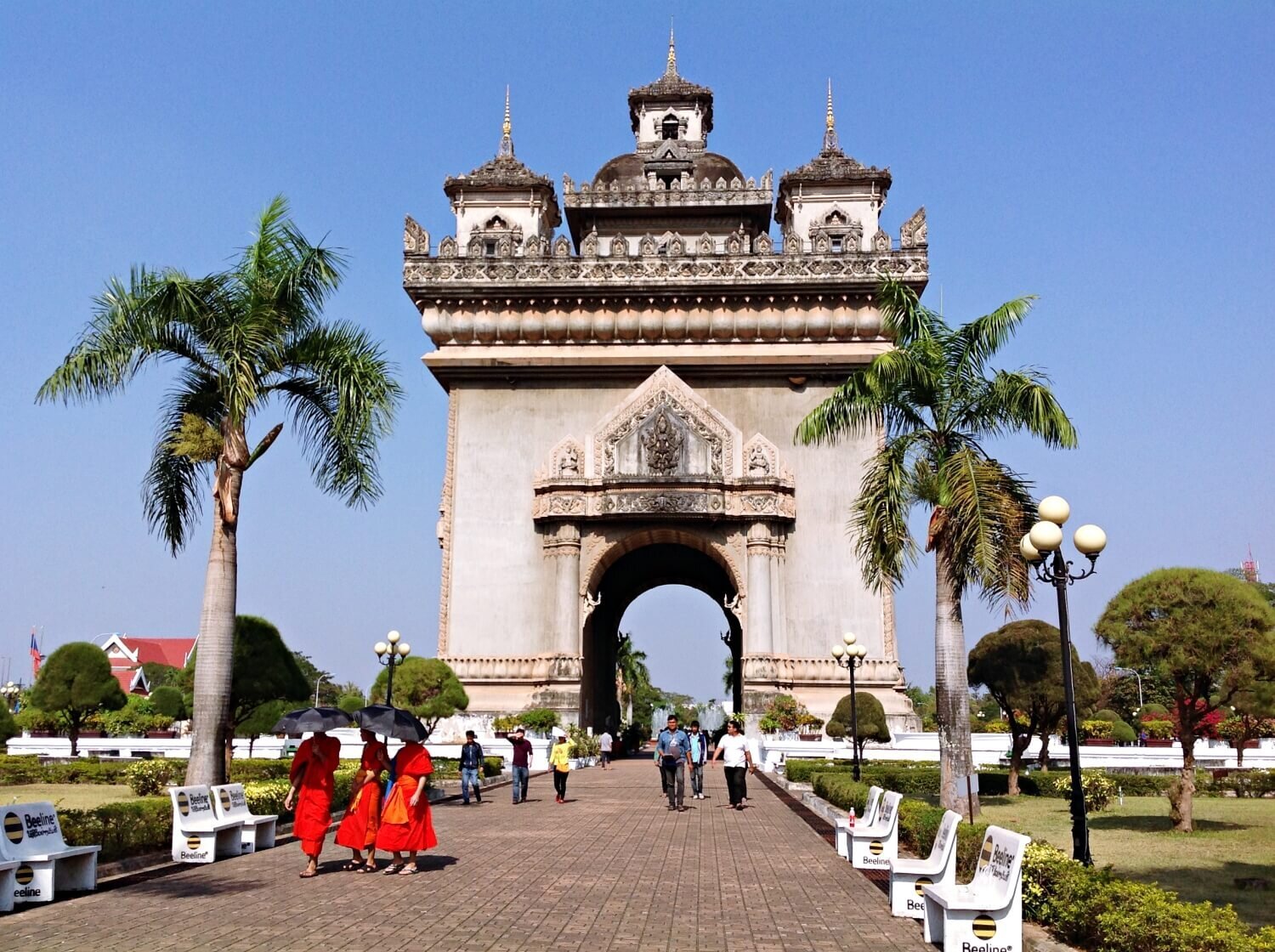
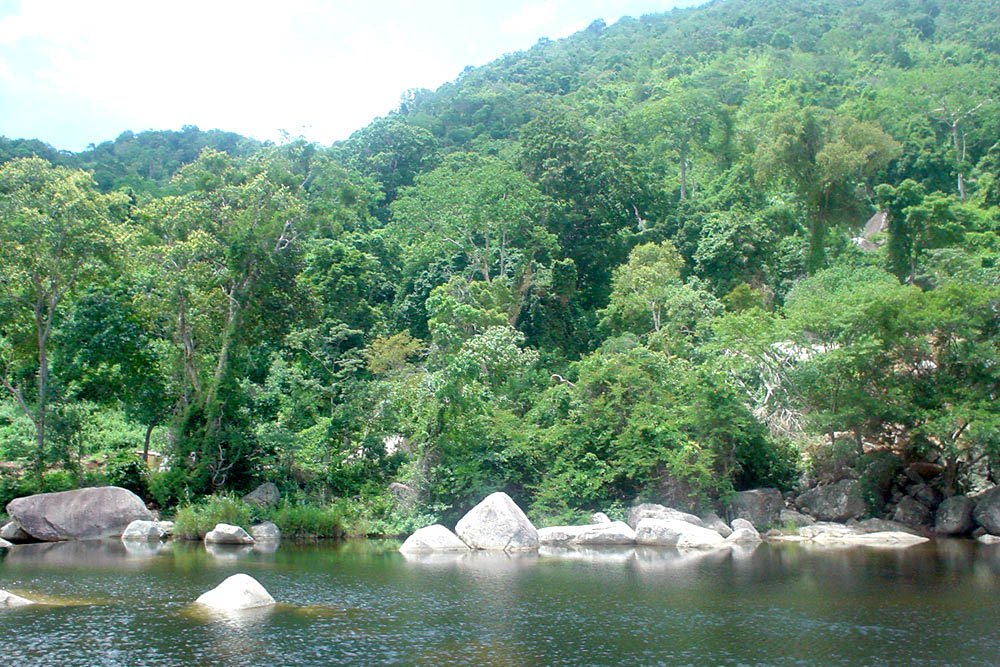
Chu Yang Sin National Park is located in Lak and Krong Bong districts, Dak Lak province, 60 km to the south-east of Buon Ma Thuot city. The national park encompasses a range of high mountains in the northern part of the Southern Annamite Mountains. The national park is centered on Mount Chu Yang Sin, which, at 2,442 m, is the highest point in the southern Annamites. The topography of the national park is characterized by steep slopes and narrow valleys.
May 28, 2025
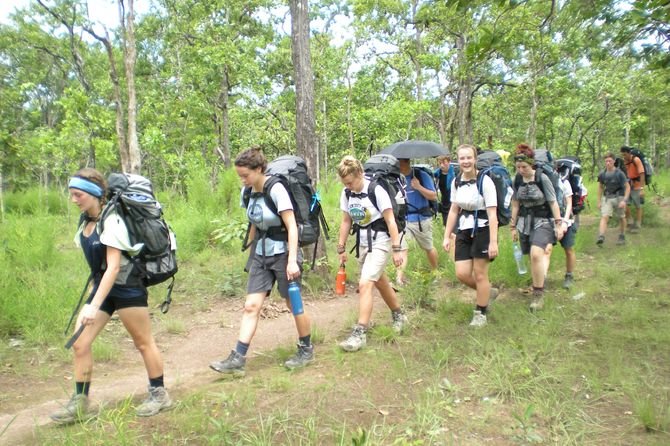
Chu Mom Ray National Park lies in the two districts of Sa Thay and Ngoc Hoi in Kon Tum Province, central highlands of Vietnam. It is the only national park in Vietnam which shares the border with the two countries of Laos and Cambodia.
May 28, 2025
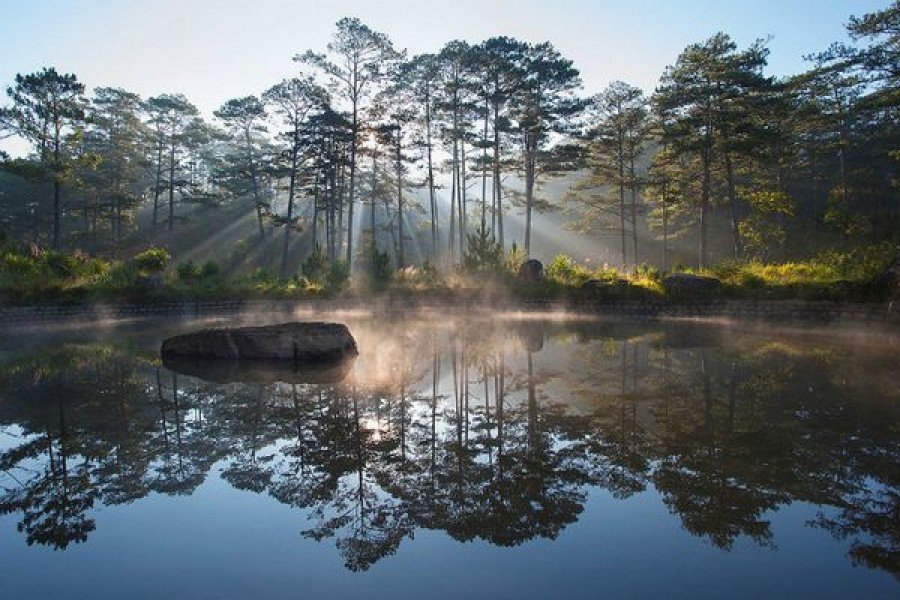
Bidoup Nui Ba National Park is situated in Lac Duong District, Lam Dong province in the central highlands of Vietnam. The park covers an area of 63,938 hectares, offering beautiful sceneries, stunning waterfalls, and diverse natural resources.
May 28, 2025
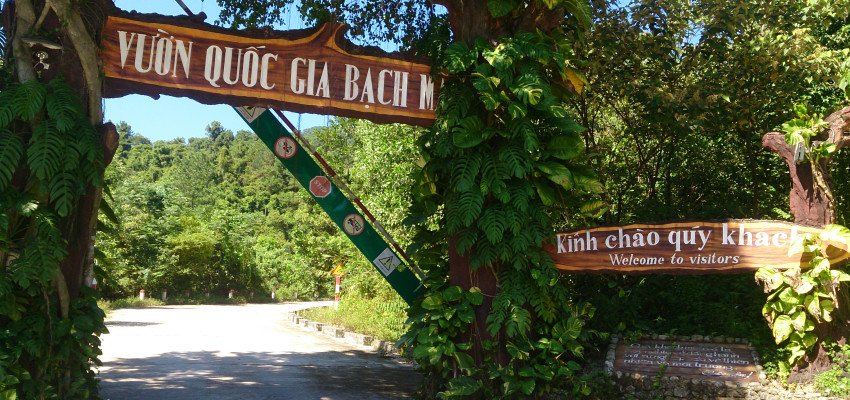
Bach Ma National Park is situated in the north central region of Vietnam, and the Annamite mountains. The national park lies on a high mountain ridge that runs west-east from the Laotian border to the East Sea at the Hai Van pass. This ridge interrupts the coastal plain of Vietnam, and, therefore, forms a biogeographical boundary between the faunas and floras of northern and southern Vietnam.
May 28, 2025
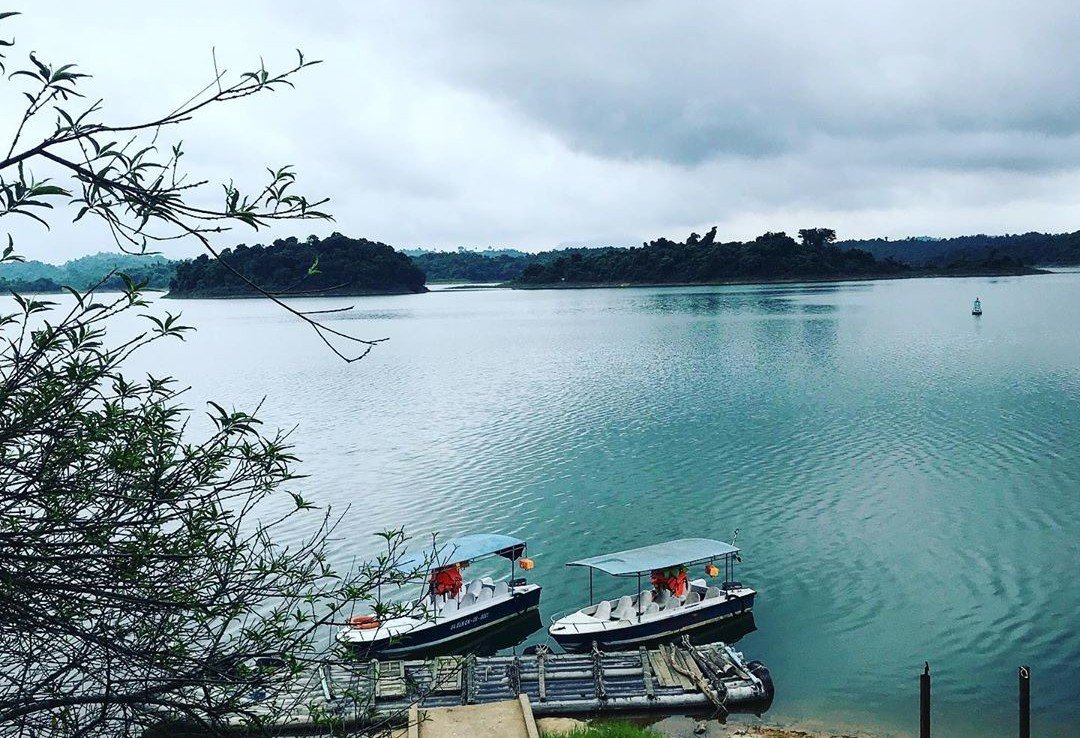
Ben En national park is situated in districts of Nhu Thanh and Nhu Xuan, Thanh Hoa Province about 200km from Hanoi. The park was established in 1992 and gradually expanded. It is not only a protected breeding ground for many rare creatures, but also an attractive destination for ecotourism.
May 28, 2025
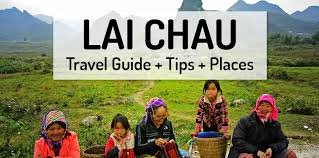
Lai Chau is a province in the northwest of Vietnam sharing borderline with Yun Nan province of China, Son La province, Dien Bien province to the west and south, and Lao Cai province to the east. The province is situated at the altitude of 1,500m above sea level, comprising high mountains, pure streams and rivers.
May 28, 2025
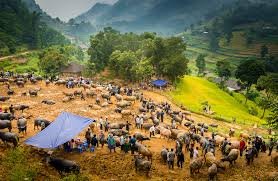
Bac Ha trekking is the best way to see Bac Ha as well as to discover its Sunday market, mountain scenery, and authentic local tribal villages.
May 28, 2025
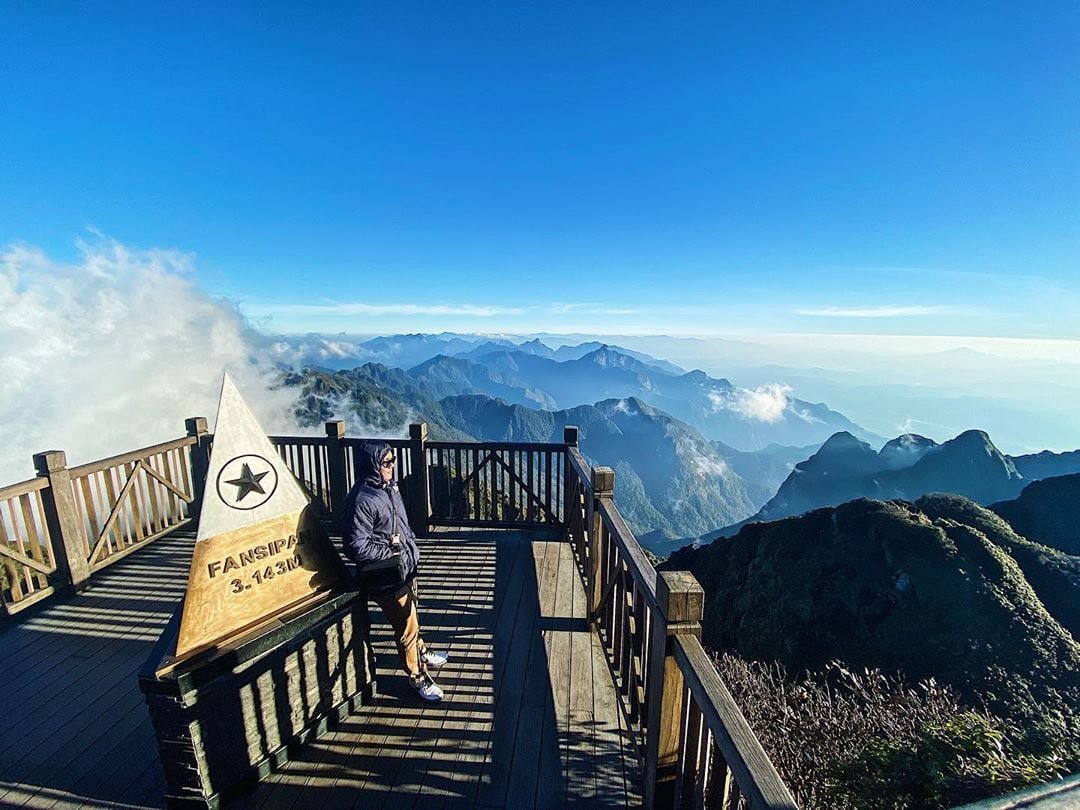
Fansipan Climbing is one of the most challenging activity in Vietnam. The Fansipan Mountain has long been the best hiking place in Vietnam. It is a favorite destination for intrepid travelers, and those who are fond of jungle trek, summit conquering, and mountain hiking.
May 28, 2025
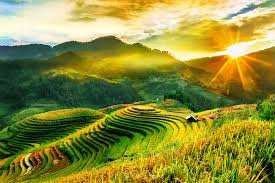
Sapa is a popular travel destination that offers the widest selection of trekking, hiking tours in Vietnam. It’s the place where a large number of tourists go to from Hanoi for some trekking through the beautiful scenery of North Vietnam’s mountains
May 28, 2025
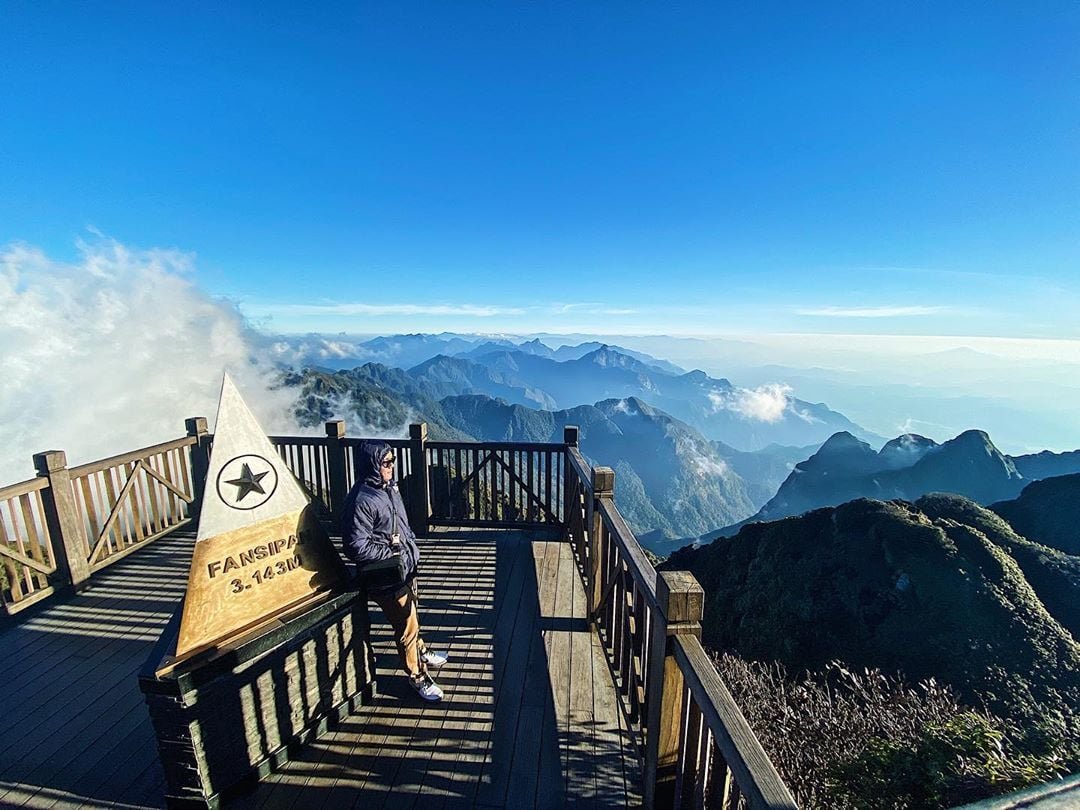
Hoang Lien National Park is situated at a height of 1,000m to 3,143m above sea level in the Hoang Lien Son Mountain Range in Sapa and Van Ban districts, Lao Cai Province, and a partly belongs to Than Uyen District, Lai Chau Province.
May 28, 2025
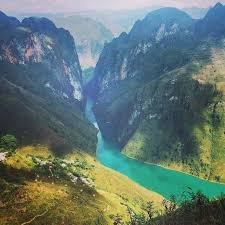
Ha Giang province is located in the northern mountainous area of Vietnam, sharing its borders with China in the north, Tuyen Quang province in the south, Cao Bang province in the east, and Yen Bai province, and and Lao Cai province in the west.
May 28, 2025
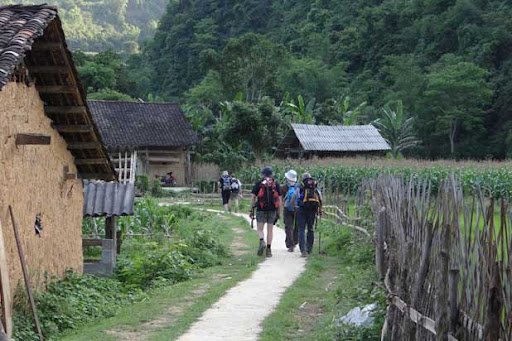
Cao Bang trekking is the best way to discover Cao Bang province as well as the northeast region of Vietnam. The place has been voted as one of top 5 trekking place in South East Asia. We at Golden Trail Travel Hiking Vietnam provide not only a wide selection of off the beaten path trekking trips in this region, but also much practical information about Cao Bang trekking, Cao Bang Vietnam trekking, Cao Bang trek, Cao Bang hiking.
May 28, 2025
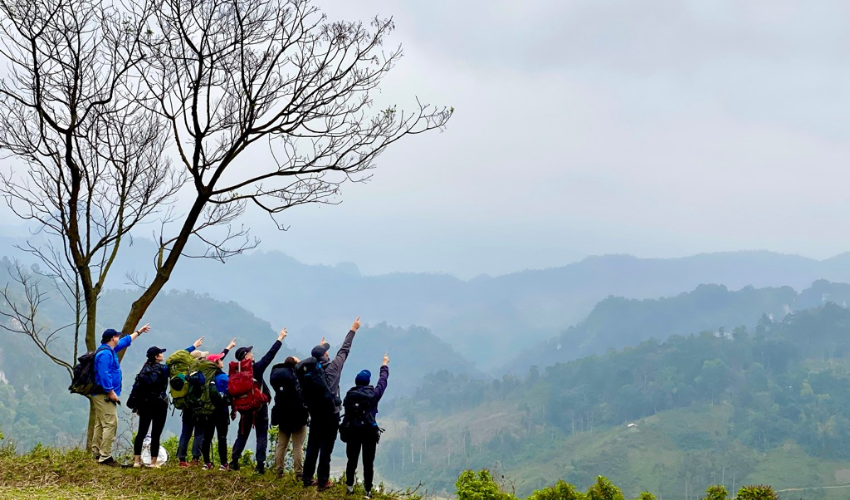
Ba Be National Park Trekking is the best way to explore the natural beauty and the unique system of flora and fauna of Ba Be. The activity also offers the chance to experience the rich ethnic culture of the Tay living within the park.
May 28, 2025
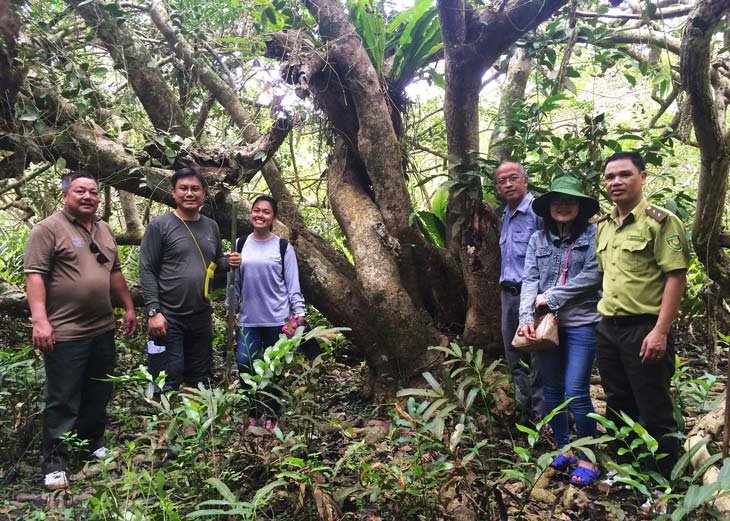
Bai Tu Long national park covers 15,783 hectares, of which forests and forest land make up 6,125 ha on more than 40 islands, and water surface accounts for 9,650 ha. It is home to 1,909 species of fauna and flora, including 72 types of animals and 30 kinds of plants listed in Vietnam’s Red Book of endangered species.
May 28, 2025

Cat Ba National Park is located in Cat Hai district, Hai Phong city in the northeast Vietnam. The national park is centered on Cat Ba island, a 28,500 ha island, which lies 20 km due east of Hai Phong city and immediately to the west of Halong bay. The national park also incorporates some of the small islands and marine waters situated to the east of Cat Ba island.
May 28, 2025
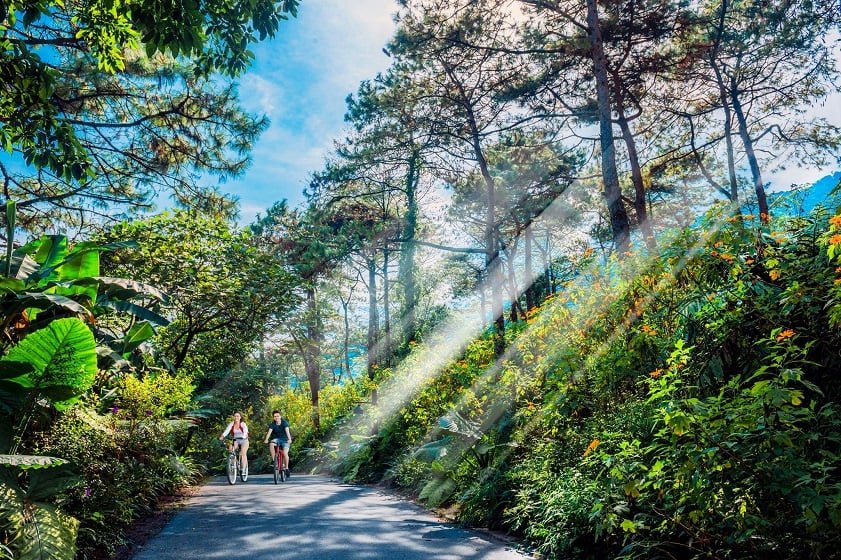
Coming to Ba Vi National Park, you will not only enjoy classic travel activities such as visit cactus gardens, Thuong Temple, French relics …you can also challenge yourself by joining a jungle trek through the park.
May 28, 2025
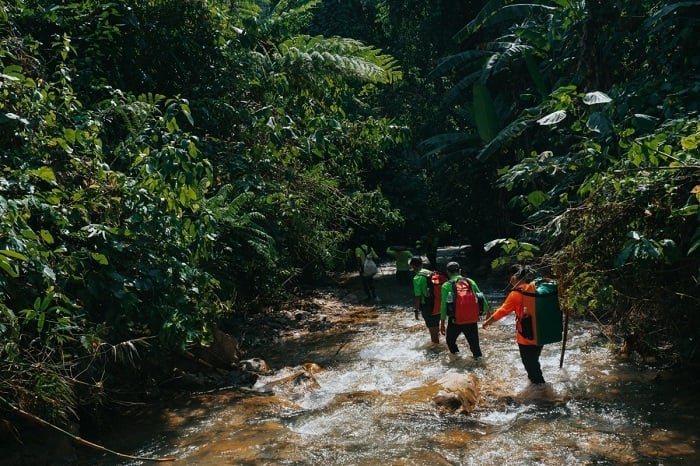
Xuan Son National Park is located 150 kilometers west of Hanoi at the entrance to the magnificent Hoang Lien Son mountain range, Phu Tho Province. The National Park is a great natural retreat and trekking area.
May 28, 2025
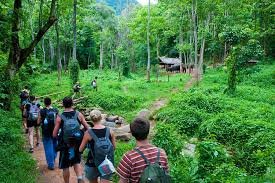
Cuc Phuong National Park is the centerpiece of Vietnam’s conservation efforts and one of the most accessible parks in Vietnam. The park is located about 120km from downtown Hanoi, and the car trip takes about 2-3 hours.
May 28, 2025
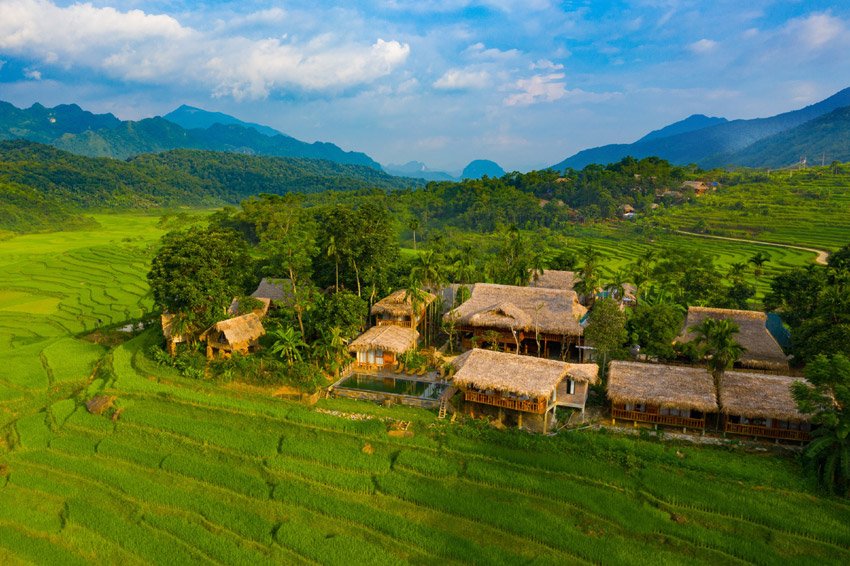
Pu Luong hiking tour is our most recommended trip since the itinerary offers you the chance to discover more the region including both the beautiful nature, rice terrace, and the authentic culture. You will have contact with different local Muong and Thai people on your Pu Luong Vietnam trek, and to experience their real, slow life.
May 28, 2025

Mai Chau Valley is located in Mai Chau District, Hoa Binh Province, approximately 135 km from Hanoi and 60 km from Hoa Binh City. Mai Chau Valley is surrounded by Thai villages scattered on the hill sides. Travelers come to Mai Chau to spend a night in a local stilt house and to experience the real life of the Thai people.
May 28, 2025